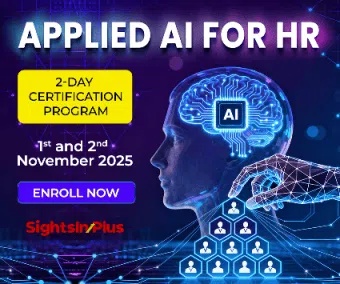The 20th century gave us the idea of a “standard career”: three decades of work, followed by retirement. That model is rapidly becoming obsolete.
With global life expectancy rising and retirement ages extending into the late 60s and 70s, careers may now span above 60 or even 70 years. In India, the life expectancy has increased to 72.5 years in 2025, compared to 52 years in 1970 and 44 years in 1960.
For Human Resources (HR) leaders, this demographic shift is not a distant possibility but an urgent reality. The challenge is not only to extend employability but also to sustain engagement, productivity, and wellbeing across a lifetime of work.
Rethinking Career Models
Traditional linear career paths—where employees steadily climb a ladder before retiring—are no longer sufficient. Instead, HR must design multi-stage careers that allow for reinvention and flexibility.
Early career stages (20s–30s) should emphasize skill acquisition, exploration, and mentorship. Mid-career (40s–50s) should focus on leadership development, cross-functional mobility, and purpose-driven work. Later stages (60s–70s) should provide opportunities for advisory roles, flexible arrangements, and legacy-building.
This shift acknowledges that career peaks can occur at any age and that reinvention is essential for long-term employability.
Lifelong Learning as Infrastructure
In a 70-year career, skills inevitably expire. Research from the OECD suggests that over one billion jobs will be transformed by technology in the next decade. Continuous reskilling is therefore not optional—it is the foundation of employability.
HR must treat learning as infrastructure, not a perk. This means providing access to modular, stackable credentials that employees can earn throughout their careers. It also means encouraging mid-career sabbaticals or fellowships to allow for reskilling and exploration.
Increasingly, AI-driven platforms can personalize learning journeys, identifying skill gaps and recommending targeted development opportunities. Organizations that embed lifelong learning into their culture will be best positioned to thrive in the age of longevity.
Age-Inclusive Workplaces
As workforces span five generations, age diversity will become a strategic advantage. Studies consistently show that age-diverse teams outperform homogeneous ones, combining the wisdom and resilience of older workers with the fresh skills and perspectives of younger ones.
HR must dismantle ageist stereotypes and create cultures that value experience. Reverse mentoring programs, where younger employees share digital expertise with older colleagues, can foster mutual respect.
Ergonomic and cognitively supportive work environments can help employees remain productive later in life. Most importantly, organizations must recognize older workers not as liabilities but as innovation catalysts and institutional memory keepers.
Wellbeing Across the Decades
A 70-year career cannot be sustained on adrenaline and burnout. HR must think in decades, not quarters, when it comes to wellbeing.
This requires tailoring benefits to different life stages: fertility and childcare support in early years, eldercare and financial planning in midlife, and cognitive health and flexible work in later years.
Career breaks should be normalized rather than penalized, whether for caregiving, travel, or personal renewal. The goal is not simply to prevent burnout but to cultivate vitality across a lifetime of work.
Purpose as the Anchor
When careers stretch across seven decades, purpose becomes the compass. Employees will increasingly seek meaning, not just paychecks.
HR can support this by offering career coaching that aligns personal values with organizational missions, creating internal marketplaces for short-term projects, and providing opportunities to contribute to causes larger than the company itself.
In later stages of a career, legacy and impact often matter more than titles or promotions. Purpose is what sustains engagement over the long haul.
Technology as the Enabler
Finally, technology will be essential in managing long careers. Predictive analytics can identify emerging skill gaps before they become crises. AI-driven learning platforms can guide employees through transitions.
Virtual reality and simulations can make reskilling immersive and engaging. Far from replacing HR, technology will amplify its role as a strategic enabler of lifelong employability.
Conclusion
The age of longevity demands a new HR mandate: to become architects of lifelong employability. Managing 70-year careers is not about keeping people employed longer—it is about helping them thrive across a lifetime of work.
Organizations that embrace this shift will not only retain talent but also unlock the full potential of a multi-generational workforce. The question is not whether employees will work for 70 years, but whether organizations will be ready to support them.
Note: We are also on WhatsApp, LinkedIn, and YouTube to get the latest news updates. Subscribe to our Channels. WhatsApp– Click Here, YouTube – Click Here, and LinkedIn– Click Here.



